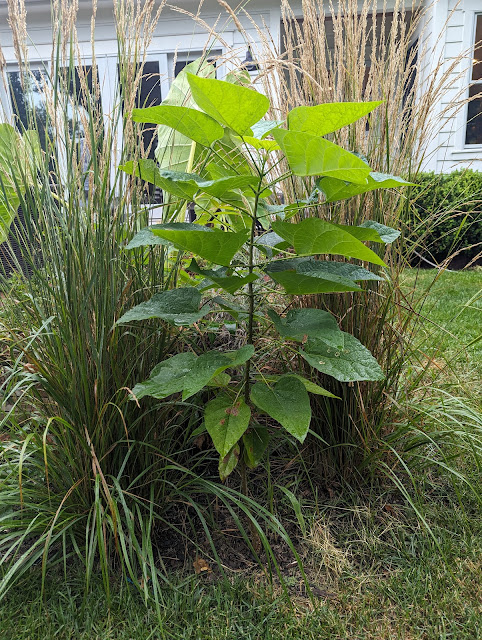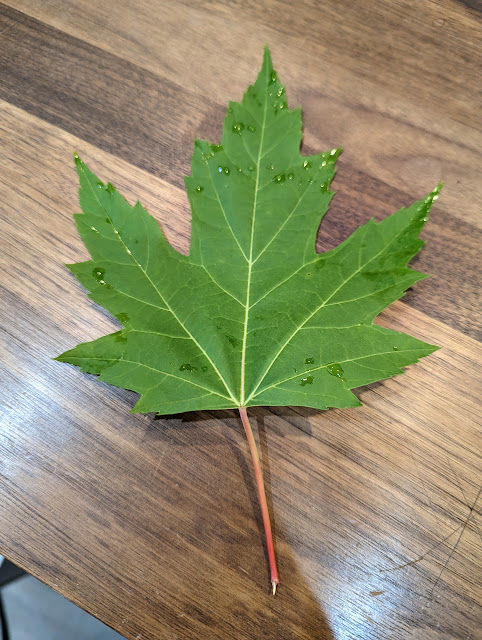Northern Catalpa Patio Tree - Leader Pruning and New Vertical Growth - July 2024

The small, volunteer Northern Catalpa tree that is growing up on one corner of our patio had a three-leader situation going on in June. Catalpas are whirl'd - which means they show growth out of three points, so having three leaders isn't surprising. About three weeks ago, I made the decision to cut-off two of them and then forgot about it. It didn't take long, but the small tree reacted VERY STRONGLY to the leader situation being sorted and has shot up about a foot in the past two weeks. Here, below, is a look at the tree as it sits currently: I'll note that the peak is right above the tips of the Karl Foerster Feather Reed Grasses. Looking back at September 2023 - late last Summer - this same tree was coming in a foot-or-so below the grass tips and I measured it at 41" tall. What is it now - after this growth spurt? 65" tall to the top of the foliage. 24" growth since September of 2023 - and most of it (I think) in the past couple of weeks.




